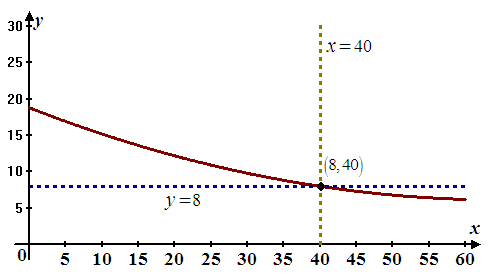
College Algebra in Context with Applications for the Managerial, Life, and Social Sciences 3rd Edition by Ronald J Harshbarger, Lisa Yocco
النسخة 3الرقم المعياري الدولي: 032157060X
College Algebra in Context with Applications for the Managerial, Life, and Social Sciences 3rd Edition by Ronald J Harshbarger, Lisa Yocco
النسخة 3الرقم المعياري الدولي: 032157060X تمرين 61
الحلول خطوة بخطوة
الخطوة 1 من2
Consider the quadratic function that models U.S. Population percentage for foreign born as shown below:
 , where
, where  is the number of years after 1900.
is the number of years after 1900.
(a)
Verify the graphical solution one of the solution to the model  is
is .
.
Sketch the graph of the quadratic function :
:

After sketching the graph , sketch the graph
, sketch the graph  and
and  on the same window.
on the same window.
Both lines  and
and  intersect the graph
intersect the graph  at the point
at the point , which verifies the
, which verifies the  is the solution of the quadratic equation
is the solution of the quadratic equation .
.
الخطوة 2 من 2
College Algebra in Context with Applications for the Managerial, Life, and Social Sciences 3rd Edition by Ronald J Harshbarger, Lisa Yocco
لماذا لم يعجبك هذا التمرين؟
أخرى 8 أحرف كحد أدنى و 255 حرفاً كحد أقصى
حرف 255








